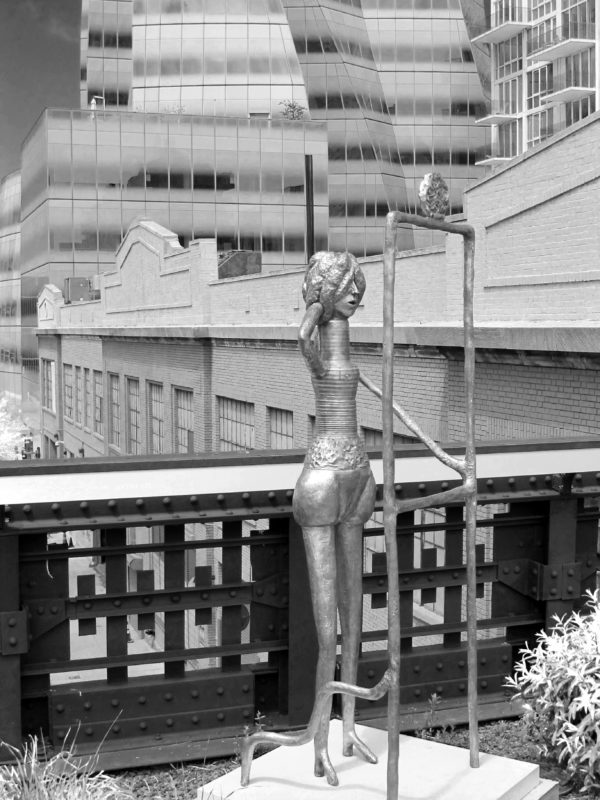
There are historic gardens, botanical gardens, productive gardens, gardens of the rich and famous, sculpture gardens, contemporary gardens – and then there is green urban development. A familiar American example would be NYC’s High Line, a 1.45 mile long park built on a disused, elevated Westside railroad spur. Here are some views from the High Line: 

Less familiar might be a number of parks developed in several regions of Germany which utilize industrial heritage sites.


 The most famous of these is probably the Landscape Park Duisburg Nord, a 450 acres site around old steelworks, blast furnaces and factory remnants, developed since 1991 by Latz and Partners. The landscape architect intended to create something that helped to heal and understand the industrial past, rather than reject it. (Note, that of course the Thyssen/Krupp company who was a major player in these parts, contributed mightily to the war effort and also used forced labor, 75.000 prisoners, if I remember correctly.) I have not yet visited these gardens, but they are, from everything I’ve heard, a mind boggling experience, in their various ways of making use of the terrain, their combination of planted gardens and naturally spreading vegetation, and their use of all the found iron pieces, screws, nuts, bolts, populating garden beds. By all reports they instill a sense of reinvention based on recycling, re-use, and hope that places can be opened to new life when their historical use is outmoded. (Photos from their website. The attached URL is a long and interesting article about the design philosophy of the park.) http://www.academia.edu/2296761/Gardens_Landscape_Nature_Duisburg_Nord_Germany
The most famous of these is probably the Landscape Park Duisburg Nord, a 450 acres site around old steelworks, blast furnaces and factory remnants, developed since 1991 by Latz and Partners. The landscape architect intended to create something that helped to heal and understand the industrial past, rather than reject it. (Note, that of course the Thyssen/Krupp company who was a major player in these parts, contributed mightily to the war effort and also used forced labor, 75.000 prisoners, if I remember correctly.) I have not yet visited these gardens, but they are, from everything I’ve heard, a mind boggling experience, in their various ways of making use of the terrain, their combination of planted gardens and naturally spreading vegetation, and their use of all the found iron pieces, screws, nuts, bolts, populating garden beds. By all reports they instill a sense of reinvention based on recycling, re-use, and hope that places can be opened to new life when their historical use is outmoded. (Photos from their website. The attached URL is a long and interesting article about the design philosophy of the park.) http://www.academia.edu/2296761/Gardens_Landscape_Nature_Duisburg_Nord_Germany
Geographically close is the Garden of Remembrance designed by Israeli artist Dani Caravan, which utilizes structures of the old harbor in Duisburg, adjacent to the new Jewish Community Center built close to the site of the synagogue destroyed in 1938. Further in the vicinity are parks nestled in abandoned, old, open brown-coal mines. The goal of all of these developments is really to make use of historical remnants but create something new that allows some harmonious union between memory and looking to the future.
One last mention of the positive use of green spaces: the international or regional garden shows that happen ever so often in Germany are these days often arranged to take place in socio-economically deprived neighborhoods. Whatever gets built for these extensive shows, their shaping of the landscape, their demonstration of green public buildings like pools or climbing halls etc. is then there for the use of the neighborhood long after the garden folks have traveled home. The photos below are from one of those three years back in Hamburg Harburg, a neighborhood that is intensely diverse and poor.

